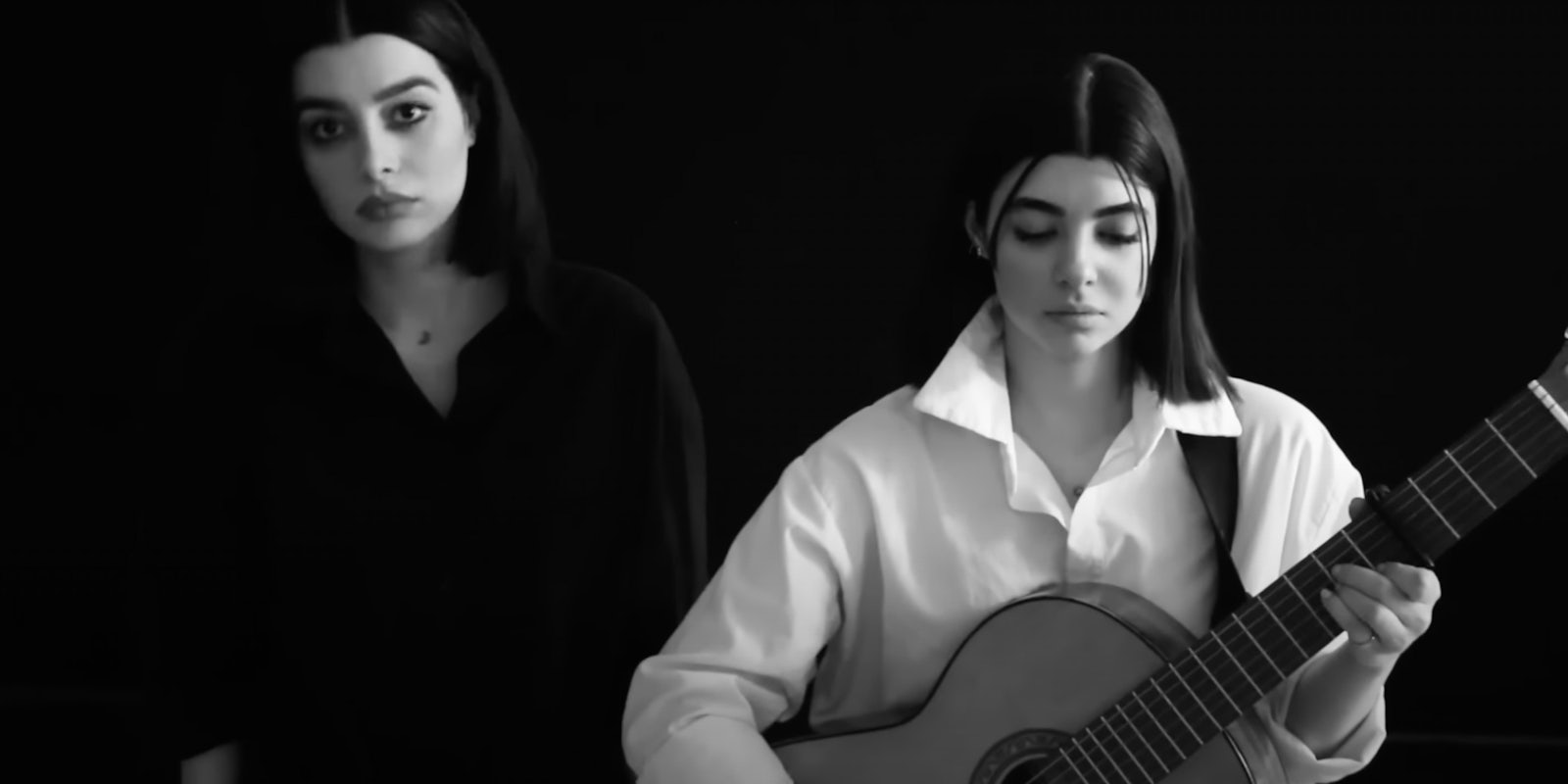Seminal moments are often soundtracked with emphatic music.
And it’s been hard—if you’ve been following the feminist revolution in Iran over the death of 22-year-old Mahsa Amini—to escape the strains of the Italian revolutionary anthem “Bella Ciao” (“Goodbye Beautiful”) accompanying the protest movement.
Amini was arrested for not wearing the traditional Muslim hijab face covering by Iran’s morality police and died in custody, sparking nearly a month of protests.
The song has since gone viral on social media as artists record their own versions of the tune, an act of unity against a repressive regime. In the ultimate act of defiance, two Iranian women sang a version in Farsi against a black background.
But it’s not just in Iran that the drumbeat and piano keys backing “Bella Ciao” can be heard.
Nearly 1,600 miles away, in Ukraine, the song is acting as an anthem to resistance against the nine-month-long Russian invasion. There, famous folk singers like Khrystyna Soloviy recorded and released their own versions of the song. Ukrainian women, serving in the country’s military, sang it from the trenches.
“Bella Ciao” is of the moment and the movement, propelled to the forefront of people’s minds in the face of rising fascist and authoritarian movements.
But the song has a long and storied history outside 2022’s made-for-social media moments.
“’Bella Ciao’ did circulate quite widely before the invention of social media,” said Phillip Cooke, a lecturer in Italian at Strathclyde University and author of a book on the Italian resistance, who has studied the rise of the song. Cooke points to the song’s popularity in France as well as its native Italy.
“Bella Ciao” is an upbeat, fast-paced, folksy song with Italian lyrics that tell the story of put-upon workers who labor in fields but hope, one day, to break free of their slavery and overthrow their bosses.
“The day will come when we all/will work in freedom,” reads the concluding line of one translation of the lyrics.
How the song came to be is disputed: some believe “Bella Ciao” started to circulate in the years after the Second World War, while others believe it wasn’t a true resistance song, but an older one that was co-opted.
However, in the last decade, more evidence has been found that links the song to partisan formations based in the north of Italy. “The debate continues, partly because of the great popularity of the song in recent years,” said Cooke. Links have been made to a similar-sounding song, “Alla mattina appena alzata,” (“In the morning as soon as I woke up”) that dates back more than 100 years.
As to why it’s popular, Cooke is clearer. “The song has become indissolubly linked to the resistance movement, and in particular to the left,” he said. “It’s always had these political connotations to it. It’s always been a song that is politically charged.”
The song gets sung annually on April 25, the date of the liberation of Italy from Nazi occupation in 1945.
Yet it’s been rediscovered thanks to the resistance movements that have been rising up worldwide, apt in its portrayal of struggles against authority.
The fact that it also appeared in the Spanish TV series La Casa de Papel, or Money Heist, which gained a widely popular second life on Netflix, didn’t harm things either.
The song was used in that series to highlight the political nature of robbing the rich—even if the spoils weren’t always given to the poor.
That helped root it in the minds of many social media users, who since deployed it to add their voice to the swelling anger over Iran and Ukraine. The hashtag #bellaciao has 2.7 billion views on TikTok, while Google search interest in the last month spiked beyond its peak for the rest of the year, which coincides with that April 25 anniversary of Italian independence. Many of the videos on TikTok are reposts of the songs from other social media platforms, though one, showing Ukrainian men in military fatigues playing classical instruments to perform the song, appears to have been born on the app.
@paranoizes #зсу #зсу #зсу🇺🇦 #зсу_найкращі #зсу2022 #зсу2022 #зсутоп #ukraine #ukrainewar #ukraine🇺🇦 #ukraine__top #украинавойна2022 #украина #зсу2022🇺🇦 ♬ оригинальный звук – Мойсей
“The most surprising aspect of the use of “Bella Ciao” is the nearly spontaneous use of the song in multiple languages to reflect on the contestations against authoritarianism happening worldwide,” said David Craig, clinical professor of communication at USC Annenberg, who tracked the song’s journey across social media. “This phenomena reflects the agency to produce and spread messages across global-scaling social media platforms.”
Going super-viral took some time, however. Videos featuring “Bella Ciao” date back months, but picked up pace recently as the conflict in Iran joins turmoil in Ukraine.
The power of social media amplified “Bella Ciao,” but the song’s structure and form means that it already had its own inherent virality built in.
“Lots of people ask me why it hits the headlines every few years,” said Cooke. “Why do you think it’s so popular? One of the reasons is that it’s very easy to memorize. It’s an easy tune, and you can belt it out loud. Anyone can scream ‘Bella Ciao’.”
And in a world where everything seems to be going wrong, many are tempted to do just that. Craig believes that its popularity captures a moment, and “points to the vast geopolitical array of conflicts in the world framed by the resurgence of populism, authoritarianism, proto-nationalism, and fascism.”
It’s an indication “that the planet has arrived at yet another historical inflection point, signaling the crisis in late democracy,” Craig said. “It’s a crisis set to song.”



